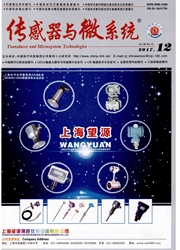

 中文摘要:
中文摘要:
利用电化学腐蚀的方法在P型单晶硅(100)衬底上制备了多孔硅薄膜。利用微拉曼光谱法分别测量了处于湿化一干燥一再湿化3个阶段的多孔硅薄膜的拉曼频移,对多孔硅内应变引起的频移改变量和纳米硅晶粒因声子限制效应引起的频移改变量进行分离,找到多孔硅薄膜残余应力与拉曼频移之间的关系式。利用这一关系式,对不同孔隙率的多孔硅薄膜的残余应力进行了计算,获得了和声子模型拟合方法相一致的结果。研究中发现,多孔硅表面残余应力随孔隙率的增加而线性增大,其原因为随着孔隙率的增加,多孔硅品格常数增大,且干燥过程中残液的蒸发产生的毛细应力使多孔硅薄膜与基体硅间品格错配程度增大造成的。
 英文摘要:
英文摘要:
Porous silicon films are obtained on highly level doped p-type (100)silicon wafers using electrochemical etching technology. Micro-Raman spectroscopy is used to characterize porous silicon in the three different stages: wetting-drying and rewetting, according to the Raman shifts as a result of different factors, the shift of phonon confinement effect resulted from nanocrystalline are separated from the shift that due to strain in porous silicon,a proper expression is found to calculate the stress according to Raman shift. And the stress is calculated on porous silicon surface with different porosity using this express. The results indicate that a larger tensile residual exists on the surface and increases linearly with the porosity, which due to the lattice mismatch between porous silicon and Si substrate and the degree of lattice mismatch higher with the porosity increasing and evaporation.
 同期刊论文项目
同期刊论文项目
 同项目期刊论文
同项目期刊论文
 期刊信息
期刊信息
